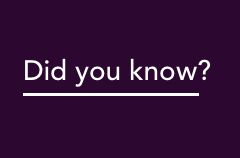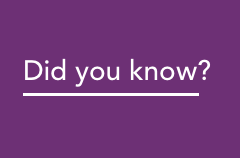Network Outages
Introduction
This page provides information on electricity network outages that are planned by each Transmission Network Service Provider (TNSP). The information provided includes where Market Participants can source outage information and the process AEMO uses to assess and approve outages.
The TNSPs use the Network Outage Scheduler (NOS) and the Planned Electricity Network Outage spreadsheet to advise AEMO of planned and unplanned outages on the transmission system. A brief summary of each is provided below.
Based on the information provided, AEMO assesses these outages to ensure that the power system can be maintained in a secure and reliable operating state during the outage. If power system security or reliability cannot be maintained, AEMO will not allow the outage to proceed. Further details on AEMO’s assessment process are provided below.
1. Network Outage Scheduler
The Network Outage Scheduler (NOS) lists planned and unplanned network outages on the transmission system. Bookings may be made by TNSPs up to two years in advance or at short notice (unplanned) in response to an emergency. The NOS details all transmission network outages including any work on protection or control systems that may result in constraints on the power system.
The NOS provides the following information for each outage:
- Planned start and finish dates/times.
- Equipment out of service.
- Invoked constraint sets.
- Approval status.
If should be noted that the NOS does not provide information on outages of generating units.
Information in the NOS is updated every 30 minutes. The NOS is available via the MMS Data Interchange or via the following link.
2. Planned Electricity Network Outages (13 month outage spreadsheet)
TNSPs are required under National Electricity Rule (NER) 3.7A to provide a schedule of their outages for the following 13 months. Many TNSPs (APT, Essential Energy, Transmission Operations Australia, TransGrid and TasNetworks) provide this information via the NOS. ElectraNet, AusNet Services and Powerlink provide this via the Planned Electricity Network Outages spreadsheet published on the 15th business day of each month. The Planned Electricity Network Outages spreadsheet provides similar information to the NOS with the exception of constraint information and approval status.
The 13 month outage spreadsheet is available via the following link.
Planned Electricity Network Outages (13 month outage spreadsheet)
3. Network Outage Assessment
Once a TNSP provides advice on a planned outage via NOS, AEMO will assess the outage to determine what network configuration, limitations or other measures, are required to maintain power system security. If there are network limitations, AEMO will invoke constraint sets to manage this. In the seven days prior to the outage, AEMO will reassess the outage based on updated information such as weather forecasts or changes in generation patterns.
On the day of the outage, AEMO’s control room will check the outage again and provide permission to the TNPS to proceed with the outage, then complete the outage and return the equipment to service.
AEMO is only able to withhold permission to proceed for outages of transmission network equipment where it would be necessary to issue a Direction or an Instruction under clause 4.8.9 of the NER to maintain the power system in a secure operating state, a reliable operating state or for reasons of public safety.
For example, AEMO could withhold permission if:
- A system security issue is unable to be resolved.
- A Lack of Reserve level 2 (LOR2) or level 3 (LOR3) is forecast during the outage.
- AEMO would be required to issue a Direction as a direct result of the outage.
AEMO can also withhold permission to proceed for outages of secondary systems or in-service work if the outage would result in significant disruption to market operation.
AEMO cannot withhold permission to proceed on the basis of pricing outcomes alone.
The NOS provides information on the status of AEMO’s approval process. It should be noted that this approval status may change at any time, up to and including on the day of the proposed outage, for a variety of reasons including:
- The nature of the planned outage changes -
- Changes to the equipment out of service.
- Changes to the start and/or finish times of the outage.
- Changes to the status of the power system -
- Unplanned outages.
- Required generation is not available.
Further details on AEMO’s role in the outage assessment process and power system security are available in AEMOs operating procedures:
Outage Assessment
Power System Security Guidelines
4. High Impact Outages
AEMO has identified a number of outages that may result in a higher than normal impact on the power system or the electricity market. AEMO refers to these as High Impact Outages. A list of upcoming High Impact Outages is published on the first business day of each week. Market Participants should refer to the NOS for any changes to High Impact Outages.
The information provided is the same as found in the NOS with the addition of:
- Potential impacts.
- Outage recall time.
- Outage reason.
A transmission network outage is classified as high impact where studies or past experience have identified:
- Potential for energy and frequency control ancillary service prices to approach the Market Price Cap or Market Price Floor; and/or
- Following a credible contingency event there is a potential for:
- A reduction in supply that may be expected to result in load shedding.
- Separation of parts of the network into islands of scheduled generation, networks and loads.
- Requirement for market intervention through issuing of Directions; or
- Disconnection of generation in the region, which exceeds the size of the single largest credible contingency under normal operating conditions.
A list of future high impact outages is available via the following link:
5. Network Outage Constraints
To manage power flows on the power system during system normal or outage conditions, AEMO invokes constraint sets within the market systems.
The Congestion Information Resource provides further information on understanding and interpreting constraints.






